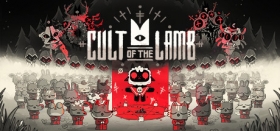
Cult of the Lamb is Progression Done Right
I often find that progression is one of the hardest things to get right in gaming, but those that succeed deliver a chef's kiss performance that dwarfs all others in competition. Whether this is an enjoyable progression through a rewarding feeling or natural and enjoyable pacing, this is easily the most essential aspect for any game to get right. There's been many a time where I am engrossed in a title until it overstays its welcome, or the story feels like it's been going on for a bit too long, or the inverse is true, and a game ends much too fast. This was a worry I got pretty early on with Cult of the Lamb's not one, not two, but four different progression areas.
One of the first worries I had with Cult of the Lamb was how many things it tries to do at any given time, a flaw in many games that have led to low review scores from me. Look no further than It Takes Two, and the unpopular opinion I have, it just tried to do too much and went in-depth in too little. With Cult of the Lamb's roguelike elements, base building, and four different progressions (Devotion, Doctrines, Story, and the Lamb's levels), I worried that all of these were going to fall short, and it was ultimately going to lead to an unfulfilling experience. Instead, what I got was an exhilarating title where it felt that it didn't matter what I did; I was working towards something.

There were times in my playthrough when I didn't go into the lands of the Old Religion for hours on end as I spent my time decorating the cult grounds and interacting with my cultists. Time slowly ticked to a halt on this, as my food and resources ran low, but the countless hours I spent decorating and interacting didn't feel as if they were for nought. Whilst I did that, I performed sermons (which raised my level) and gathered Devotion (which unlocked other buildings for me to take advantage of). It became a rewarding give and take, where every area of progression that Cult of the Lamb offered me benefited from the other, and it took away the feeling of uselessness in performing some tasks. In fact, I actively looked to tackle other areas because I could see the next thing I wanted to unlock just on the horizon.
The progression is done expertly because all four tracks offer an incentive to tackle other areas rather than isolating you in a specific gameplay mechanic. While I ventured into the lands of the Old Religion to slay the Heretics, I found followers to raise my cult, gathered materials to bolster my grounds, and compiled stone tablet fragments to decree Doctrines. Meanwhile, interacting with the camp raised my level through sermons and offered me new buildings to assist me in battle, such as a demonic circle that allowed me to take a possessed follower with me in the crusades. Both areas offered me countless things that I wanted to progress on, and I spent just enough time in both that it didn't feel fruitless or hopeless; I actively looked forward to doing the next big thing.

So, what did Cult of the Lamb do right about progression? Nothing feels unproductive, and it effectively rewards you for dabbling in different areas. I had enough time doing one or the other that it didn't feel limiting. And, although you'd think that interacting with the cult might be boring for those that are only interested in the action-based gameplay, neither side is so necessary so as to restrict the other. Ultimately, the game was built perfectly to offer a balance for all types of gamers — both those that wish to seek out Heretics and slay them and those that wish to build a community have enough to enjoy.











COMMENTS